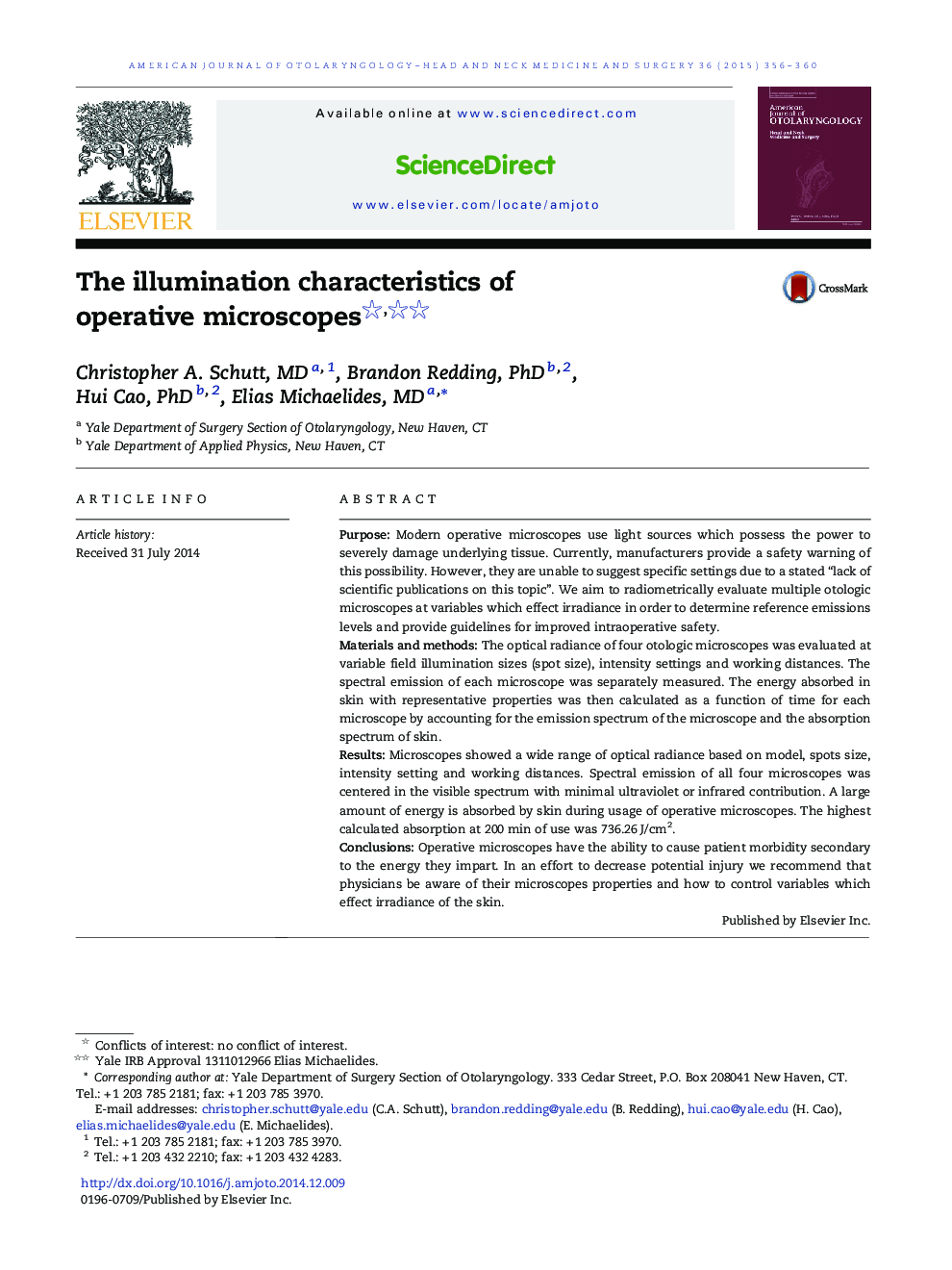| Article ID | Journal | Published Year | Pages | File Type |
|---|---|---|---|---|
| 4103535 | American Journal of Otolaryngology | 2015 | 5 Pages |
PurposeModern operative microscopes use light sources which possess the power to severely damage underlying tissue. Currently, manufacturers provide a safety warning of this possibility. However, they are unable to suggest specific settings due to a stated “lack of scientific publications on this topic". We aim to radiometrically evaluate multiple otologic microscopes at variables which effect irradiance in order to determine reference emissions levels and provide guidelines for improved intraoperative safety.Materials and methodsThe optical radiance of four otologic microscopes was evaluated at variable field illumination sizes (spot size), intensity settings and working distances. The spectral emission of each microscope was separately measured. The energy absorbed in skin with representative properties was then calculated as a function of time for each microscope by accounting for the emission spectrum of the microscope and the absorption spectrum of skin.ResultsMicroscopes showed a wide range of optical radiance based on model, spots size, intensity setting and working distances. Spectral emission of all four microscopes was centered in the visible spectrum with minimal ultraviolet or infrared contribution. A large amount of energy is absorbed by skin during usage of operative microscopes. The highest calculated absorption at 200 min of use was 736.26 J/cm2.ConclusionsOperative microscopes have the ability to cause patient morbidity secondary to the energy they impart. In an effort to decrease potential injury we recommend that physicians be aware of their microscopes properties and how to control variables which effect irradiance of the skin.
